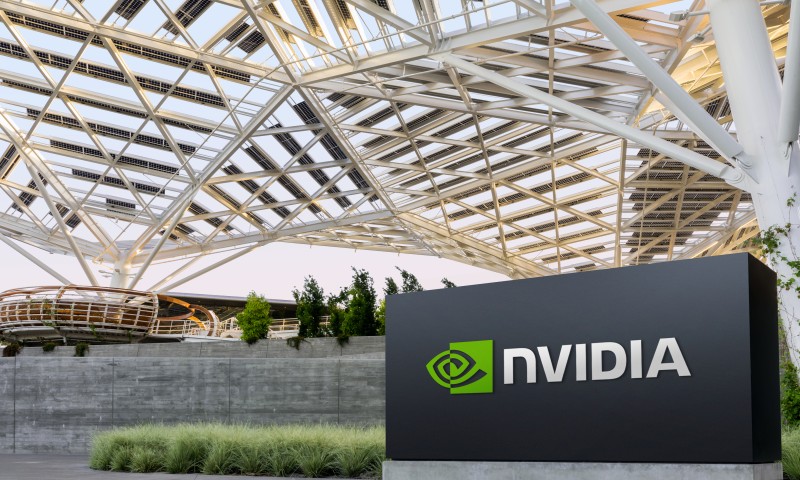On June 18th Nvidia overtook Microsoft as the world’s most valuable company. According to The Economist. its market capitalisation of $3.3trn is more than 20 times what it was in January 2020. Investors are buying its shares as greedily as tech giants are buying its artificial-intelligence chips. Nvidia’s revenue in the quarter ending in April rose by 262%, year on year. Its net income rose by 628%.
Nvidia grew from a gaming chip company to a leading artificial intelligence (AI) company. They are now the world’s most valuable companies and have more than 26,000 employees.
The company was founded in 1993 by Jensen Huang, Chris Malachowsky, and Curtis Priem. The three discussed the company’s formation over a meal at a Denny’s restaurant — the same diner chain Huang once worked at as a teenager in Portland — near San Jose, California. They started out designing graphics processing units (GPUs) for PCs. In 1999, they released the GeForce 256, the world’s first programmable graphics card. This allowed for custom shading and lighting effects in computer graphics. By the 2000s, GPUs were in high demand among gamers for their ability to accelerate graphics and image processing.
In 2006, Nvidia released a software toolkit called CUDA that allowed their GPUs to be used for general purpose computing. This turned out to be a major turning point for the company as it allowed their GPUs to be used for AI applications.
In the 2010s, Nvidia shifted its focus from gaming chips to developing hardware and software for next-level computing, specifically targeting artificial intelligence (AI). This strategic move proved pivotal for the company’s growth. A series of advancements in GPU architecture throughout the decade laid the foundation for Nvidia’s dominance in AI. The company’s 2006 Tesla architecture marked the beginning of this shift, followed by continuous improvements with Fermi, Kepler, Maxwell, Pascal, and Volta architectures.
The turning point came in 2012 with the rise of deep learning. Nvidia’s GPUs proved ideal for deep neural networks, complex systems that process massive datasets for tasks like image recognition and natural language processing. Recognising this opportunity, Nvidia introduced the Turing architecture in 2018 with a specific focus on AI enhancements. This focus continued with subsequent architectures like Ampere, Ada Lovelace, Hopper, and Grace.
Nvidia’s gamble on AI paid off. By providing a comprehensive AI platform with hardware and software, they empowered organisations to develop and utilise AI tools. Today, their platform supports leading cloud services from Amazon, Google, and Microsoft. As AI continues to evolve, Nvidia remains at the forefront, with millions of developers and thousands of companies relying on their AI technologies.
Timeline:
- 1993: Nvidia founded by Jensen Huang, Chris Malachowsky, and Curtis Priem.
- 1994: Nvidia forms partnership with SGS-Thomson (now STMicroelectronics).
- 1995: Nvidia releases NV1, a multimedia PCI card, and gets funding from Sequoia and Sierra.
- 1996: Nvidia focuses on desktop PC graphics and partners with Dell, Gateway, and Micron.
- 1997: Nvidia launches RIVA 128, a high-performance 3D processor.
- 1998: Nvidia launches RIVA TNT, the industry’s first multi-texturing 3D processor, and moves HQ.
- 1999: Nvidia goes public at $12 a share and releases GeForce 256, the first GPU.
- 2000: Nvidia becomes the graphics processor supplier for Microsoft’s Xbox gaming console.
- 2001: Nvidia supplies GPUs for Apple’s Power Mac G4 and is added to the Nasdaq 100 and S&P 500 indexes.
- 2006: Nvidia releases CUDA for general-purpose GPU computing and Tesla Architecture.
- 2007: Nvidia launches Tesla products for scientific and engineering computing.
- 2010: Fermi Architecture enhances Nvidia’s parallel computing capabilities.
- 2012: Nvidia releases AlexNet neural network and Kepler Architecture improves power efficiency.
- 2014: Maxwell Architecture improves power performance and efficiency.
- 2016: Nvidia donates DGX-1 supercomputer to OpenAI, and Pascal Architecture improves performance.
- 2017: Volta Architecture powers Nvidia’s Tesla V100 Tensor Core data center GPU.
- 2018: Turing Architecture enhances AI and graphics rendering.
- 2020: Ampere Architecture further enhances AI capabilities.
- 2022: Ada Lovelace and Hopper Architectures advance efficiency and AI, while Grace targets data centers.
- June 7, 2024: Nvidia conducts its sixth stock split, turning each existing share into 10 shares worth 1/10th of the price.
- June 18, 2024: Nvidia, with a market capitalization of $3.3 trillion, moves past Microsoft and Apple to become the world’s most valuable publicly traded company. Huang’s 3.8% stake puts his net worth at at least $126 billion and within reach of the ranks of the 10 wealthiest people.





